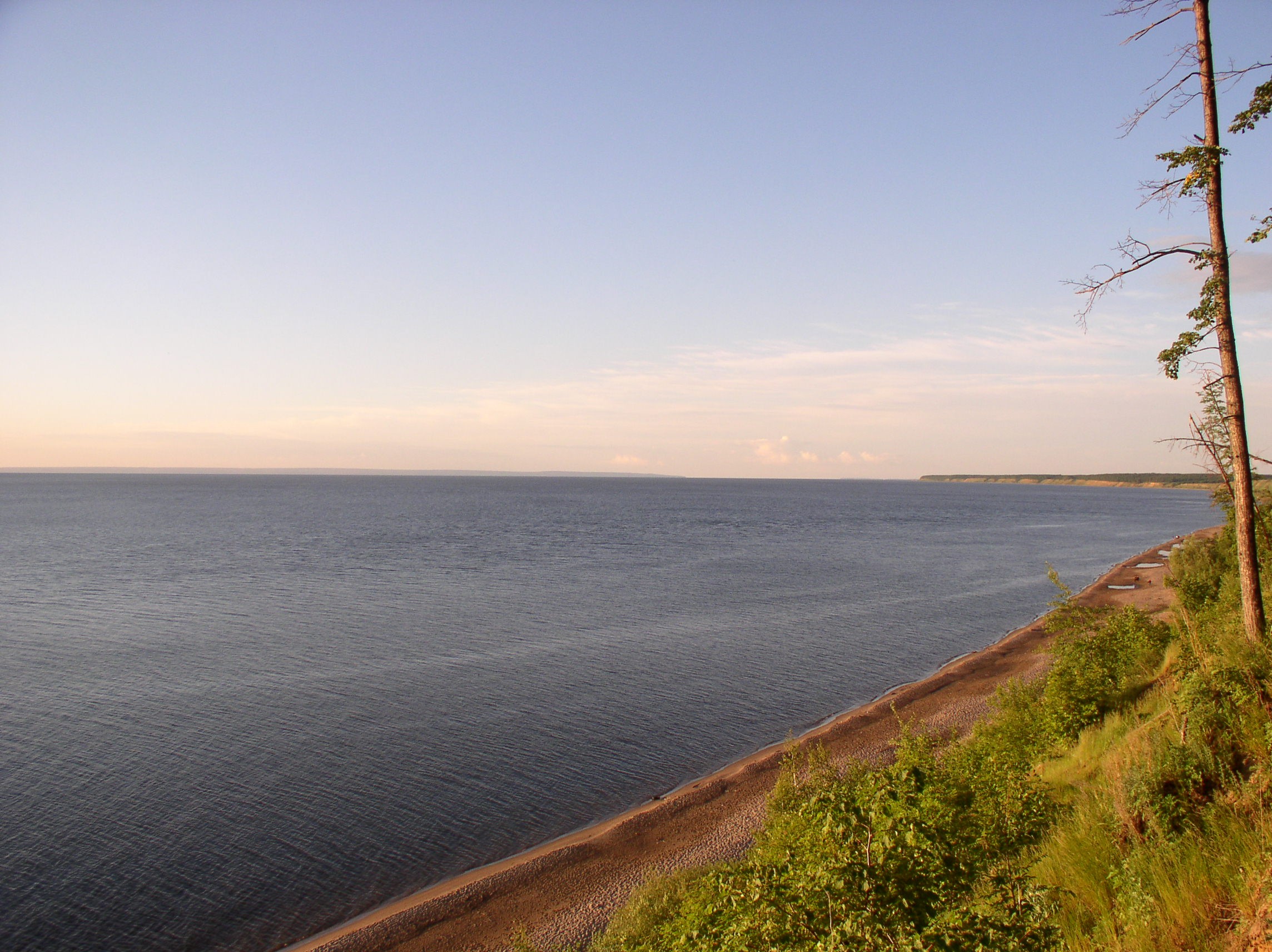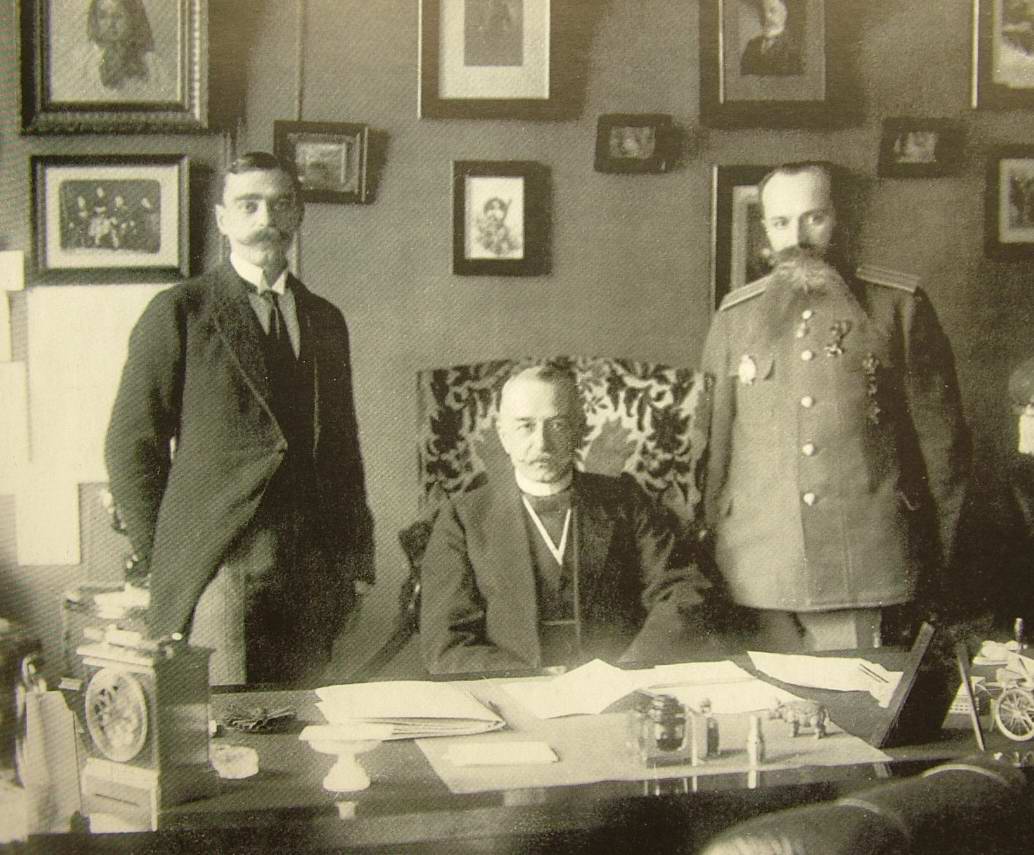|
Simbirsk
Ulyanovsk, known until 1924 as Simbirsk, is a city and the administrative center of Ulyanovsk Oblast, Russia, located on the Volga River east of Moscow. Population: The city, founded as Simbirsk (), was the birthplace of Vladimir Lenin (born Ulyanov), for whom it was renamed after his death in 1924; and of Alexander Kerensky, the leader of the Russian Provisional Government which Lenin overthrew during the October Revolution of 1917. It is also famous for its writers such as Ivan Goncharov, Nikolay Yazykov and Nikolay Karamzin, and for painters such as Arkady Plastov and Nikas Safronov. UNESCO has designated Ulyanovsk as a City of Literature since 2015. History Simbirsk was founded in 1648 by the boyar Bogdan Khitrovo. The fort of "Simbirsk" (alternatively "Sinbirsk") was strategically placed on a hill on the Western bank of the Volga River. The fort was meant to protect the eastern frontier of the Tsardom of Russia from the nomadic tribes and to establish a permanent r ... [...More Info...] [...Related Items...] OR: [Wikipedia] [Google] [Baidu] |
Ulyanovsk Oblast
Ulyanovsk Oblast (russian: Ульяновская область, ''Ul’janovskaja oblast’'') is a federal subject of Russia (an oblast). It is located in the Volga Federal District. Its administrative center is the city of Ulyanovsk. Population: 1,292,799 ( 2010 Census). Geography Ulyanovsk Oblast borders with Chuvashia (N), Tatarstan (NE), Samara Oblast (E), Saratov Oblast (S), Penza Oblast (W), and Mordovia (NW). It is located on the northern edge of Central Steppes. A quarter of its territory is covered with deciduous forests; the rest is covered with steppes and meadows. The oblast is divided in half by the Volga River. Hilly areas to the west of the Volga are known as Volga Upland (elevations up to 358 m (1,175 ft) ). Eastern part of the oblast is mostly flat. The water table occupies about 6% of territory. Ulyanovsk Oblast has moderately continental, highly volatile climate. Temperature averages at +19 °C (66 °F) in July, and −11 ... [...More Info...] [...Related Items...] OR: [Wikipedia] [Google] [Baidu] |
Nikolay Karamzin
Nikolay Mikhailovich Karamzin (russian: Николай Михайлович Карамзин, p=nʲɪkɐˈlaj mʲɪˈxajləvʲɪtɕ kərɐmˈzʲin; ) was a Russian Empire, Russian Imperial historian, romantic writer, poet and critic. He is best remembered for his fundamental ''History of the Russian State'', a 12-volume national history. Early life Karamzin was born in the small village of Mikhailovka (modern-day Karamzinka village of the Ulyanovsk Oblast, Russia) near Simbirsk in the Znamenskoye family estate. Another version exists that he was born in 1765 in the Mikhailovka village of the Orenburg Governorate (modern-day Preobrazhenka village of the Orenburg Oblast, Russia) where his father served, and in recent years Orenburg historians have been actively disputing the official version.''Mikhail Pogodin (1866)''Nikolai Mikhailovich Karamzin. Based on Writings, Letters and Opinions — Moscow: A. I. Mamontov Publishing, p. 1-3''Albert Starchevsky (1849)''Nikolai Mikhailovic ... [...More Info...] [...Related Items...] OR: [Wikipedia] [Google] [Baidu] |
Ivan Goncharov
Ivan Alexandrovich Goncharov (, also ; rus, Ива́н Алекса́ндрович Гончаро́в, r=Iván Aleksándrovich Goncharóv, p=ɪˈvan ɐlʲɪkˈsandrəvʲɪdʑ ɡənʲtɕɪˈrof; – ) was a Russian novelist best known for his novels '' The Same Old Story'' (1847), '' Oblomov'' (1859), and '' The Precipice'' (1869, also translated as ''Malinovka Heights''). He also served in many official capacities, including the position of censor. Goncharov was born in Simbirsk into the family of a wealthy merchant; as a reward for his grandfather's military service, they were elevated to gentry status. He was educated at a boarding school, then the Moscow College of Commerce, and finally at Moscow State University. After graduating, he served for a short time in the office of the Governor of Simbirsk, before moving to Saint Petersburg where he worked as government translator and private tutor, while publishing poetry and fiction in private almanacs. Goncharov's first novel, ... [...More Info...] [...Related Items...] OR: [Wikipedia] [Google] [Baidu] |
Vladimir Lenin
Vladimir Ilyich Ulyanov. ( 1870 – 21 January 1924), better known as Vladimir Lenin,. was a Russian revolutionary, politician, and political theorist. He served as the first and founding head of government of Soviet Russia from 1917 to 1924 and of the Soviet Union from 1922 to 1924. Under his administration, Russia, and later the Soviet Union, became a one-party socialist state governed by the Communist Party. Ideologically a Marxist, his developments to the ideology are called Leninism. Born to an upper-middle-class family in Simbirsk, Lenin embraced revolutionary socialist politics following his brother's 1887 execution. Expelled from Kazan Imperial University for participating in protests against the Russian Empire's Tsarist government, he devoted the following years to a law degree. He moved to Saint Petersburg in 1893 and became a senior Marxist activist. In 1897, he was arrested for sedition and exiled to Shushenskoye in Siberia for three years, where he m ... [...More Info...] [...Related Items...] OR: [Wikipedia] [Google] [Baidu] |
Alexander Protopopov
Alexander Dmitrievich Protopopov (; 18 December 1866 – 27 October 1918) was a Russian publicist and politician who served as Minister of the Interior from September 1916 to February 1917. Protopopov became a leading liberal politician in Russia after the Russian Revolution of 1905 and elected to the State Duma with the Octobrist Party. Protopopov was appointed Minister of the Interior with the support of Empress Alexandra during World War I, but his inexperience and mental instability failed to relieve the effects of the war on Russia and contributed to the decline of the Imperial government. Protopopov remained Minister of the Interior despite attempts to remove him for his policy failures, worsening mental state, and close relationship with Grigori Rasputin until he was forced to resign shortly before the February Revolution. According to Bernard Pares, Protopopov "was merely a political agent; but his intentions as to policy, considering the post which he held, are of hi ... [...More Info...] [...Related Items...] OR: [Wikipedia] [Google] [Baidu] |
Alexander Kerensky
Alexander Fyodorovich Kerensky, ; original spelling: ( – 11 June 1970) was a Russian lawyer and revolutionary who led the Russian Provisional Government and the short-lived Russian Republic for three months from late July to early November 1917. After the February Revolution of 1917, he joined the newly formed provisional government, first as Minister of Justice, then as Minister of War, and after July as the government's second Minister-Chairman. He was the leader of the social-democratic Trudovik faction of the Socialist Revolutionary Party. Kerensky was also a vice-chairman of the Petrograd Soviet, a position that held a sizable amount of power. Kerensky became the prime minister of the Provisional Government, and his tenure was consumed with World War I. Despite mass opposition to the war, Kerensky chose to continue Russia's participation. His government cracked down on anti-war sentiment and dissent in 1917, which made his administration even more unpopular. ... [...More Info...] [...Related Items...] OR: [Wikipedia] [Google] [Baidu] |
Nikolay Yazykov
Nikolay Mikhailovich Yazykov (russian: Никола́й Миха́йлович Язы́ков, March 4, 1803, Simbirsk, Russian Empire – December 26, 1846, Moscow, Russian Empire) was a Russian poet and Slavophile who in the 1820s rivalled Alexander Pushkin and Yevgeny Baratynsky as the most popular poet of his generation. Biography Yazykov was born in Simbirsk to an old family of Russian landlords. His first verses appeared in print in 1819. For seven years (1822-1829) Yazykov studied at the philosophy department of Dorpat University, where he made himself famous with his riotously Anacreontic verse in praise of the students' merry life. For his summer vacations he went to Trigorskoye, where he met Pushkin. After leaving Dorpat, without a degree, Yazykov lived between Moscow and his Simbirsk estate. Later in life, he became intimate with the nationalist and Slavophile circles of Moscow, which held his poetry in high esteem. Nikolay Gogol, in particular, favoured Yazykov over ... [...More Info...] [...Related Items...] OR: [Wikipedia] [Google] [Baidu] |
Stenka Razin
Stepan Timofeyevich Razin (russian: Степа́н Тимофе́евич Ра́зин, ; 1630 – ), known as Stenka Razin ( ), was a Cossack leader who led a major uprising against the nobility and tsarist bureaucracy in southern Russia in 1670–1671. Early life Razin's father, Timofey Razya, supposedly came from a suburb of Voronezh, a city near Russia's steppe frontier, called the Wild Fields. Razin's uncle and grandmother still lived in the village of ''New Usman or ''Usman' Sobakina'', outside of Voronezh, until 1667. The identity of Razin's mother is debated. In one document, Razin was referred to as a ''tuma Cossack'' which means "half-blood", leading to a hypothesis that his mother was a captured "Turkish" (''turchanka'') or Crimean Tatar woman. However, this term was also used by "upper Cossacks" as a derogatory nickname towards all "lower Cossacks" regardless of origin Another hypothesis draws on information about Razin's godmother Matrena Govorukha. According ... [...More Info...] [...Related Items...] OR: [Wikipedia] [Google] [Baidu] |
Arkady Plastov
Arkady Alexandrovich Plastov (russian: Аркадий Александрович Пластов; – 12 May 1972) was a Russian socialist realist painter. Biography Plastov was born into a family of icon painters in the village Prislonikha in the Russian Governorate of Simbirsk. He attended the sculpture department of the Moscow School of Painting, Sculpture and Architecture beginning in 1914. In 1917, he returned to his native village, where he occupied himself with painting, drawing from nature. Starting in 1935, he steps introduces his category painting into the public. According to the strict political-artistic doctrine of the time at that time, which only permits the style of socialist realism in all art kinds, Plastov pictures the life in the Soviet Union, the pervasive building up of socialism. His work is characterized by his knowledge of the life in the villages of the Soviet Union, his love for his native land, strong, live pictures and his skills of painting. As the ... [...More Info...] [...Related Items...] OR: [Wikipedia] [Google] [Baidu] |
Yemelyan Pugachev
Yemelyan Ivanovich Pugachev (russian: Емельян Иванович Пугачёв; c. 1742) was an ataman of the Yaik Cossacks who led a great popular insurrection during the reign of Catherine the Great. Pugachev claimed to be Catherine's late husband, Emperor Peter III. Alexander Pushkin wrote a notable history of the rebellion, ''The History of Pugachev'', and recounted the events of the uprising in his novel '' The Captain's Daughter'' (1836). Early life Pugachev, the son of a small Don Cossack landowner, was the youngest son of four children. Born in the stanitsa Zimoveyskaya (in present-day Volgograd Oblast), he signed on to military service at the age of 17. One year later, he married a Cossack girl, Sofya Nedyuzheva, with whom he had five children, two of whom died in infancy. Shortly after his marriage, he joined the Russian Second Army in Prussia during the Seven Years' War under the command of Count Zakhar Chernyshov. He returned home in 1762, and for th ... [...More Info...] [...Related Items...] OR: [Wikipedia] [Google] [Baidu] |
Bogdan Khitrovo
Bogdan Matveyevich Khitrovo (russian: Богдан Матвеевич Хитрово) (ca. 1615 – 27 March 1680) was a high-placed Russian statesman, or boyar, who served Tsar Alexis and his son Fyodor III, supporting the party of Maria Miloslavskaya. He is also noted for his patronage of icon-painter Simon Ushakov and Simeon of Polotsk, the first Russian poet. It appears likely that Khitrovo was born in Grigoryevskoye, his father's estate in the region of Kaluga. He later would endow the Lyutikov Monastery in nearby Vorotynsk with a number of generous gifts, including an icon featuring his own portrait. He made a name for himself in the mid-1640s as a governor of Temnikov. At that time he established a chain of forts along the Volga river, including Simbirsk, which has an equestrian monument in his honor. Starting in 1648, Khitrovo pursued a brilliant career at court. He was in charge of many prikazes between 1649 and 1664 and he held the office of Master of Arms, or Lord ... [...More Info...] [...Related Items...] OR: [Wikipedia] [Google] [Baidu] |







.jpg)